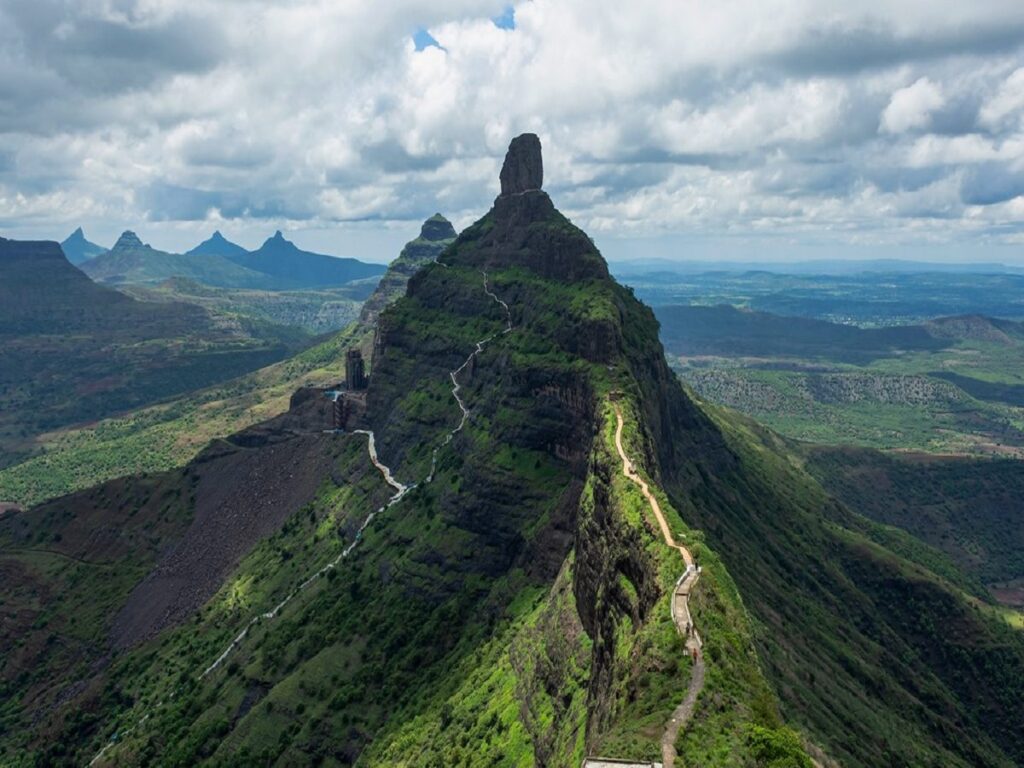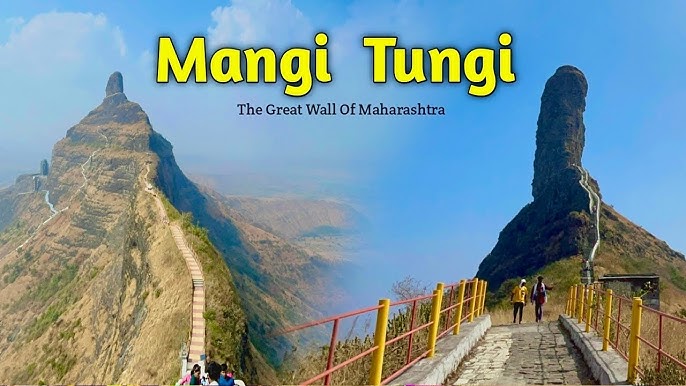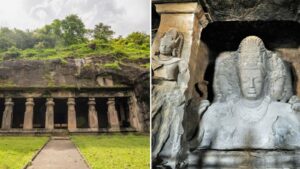Mangi-Tungi: Maharashtra’s Own Great Wall of Faith, History and Natural Grandeur

Mangi-Tungi: Maharashtra’s Own Great Wall of Faith, History and Natural Grandeur
Rising boldly from the Sahyadri range, Mangi-Tungi instantly commands attention with its sheer cliffs, steep stairways, and spiritual aura.
Often called the Great Wall of Maharashtra, this twin-peaked hill formation is more than a natural landmark, it is a living blend of history, faith, and breathtaking landscapes.
Located about 125 km from Nashik, Mangi-Tungi draws thousands of visitors each year. For some, it is a sacred Jain pilgrimage; for others, it is the challenge of the climb and the allure of the mountains. Yet all who visit leave with a sense of awe and pride.
A Journey Through Faith and Stone
The hills of Mangi and Tungi rise dramatically from the Sahyadris, crowned with ancient Jain statues carved directly into the rock face. These intricate works stand as silent witnesses to centuries of devotion, making the site one of the most revered Jain pilgrimage destinations in western India.
The Climb and the Challenge
The approach to Mangi-Tungi is a test of both endurance and spirit. Thousands of stone steps wind upward, offering ridge-line views that grow more spectacular with every turn. The higher you climb, the more the mountains seem to tell their story, one of resilience, faith, and natural grandeur.
Nature’s Grandeur
Surrounded by rugged landscapes and serene valleys, Mangi-Tungi is as much a destination for nature lovers as it is for pilgrims. At sunrise or sunset, the views from the ridge are nothing short of magical, casting a golden glow over the Sahyadris.

More Than a Pilgrimage
Whether you come to offer prayers, to test your stamina, or simply to witness the harmony of stone and spirit, Mangi-Tungi promises a journey that lingers long after the descent. It is a place where Maharashtra’s mountains stand tall, echoing both the strength of nature and the endurance of faith.












